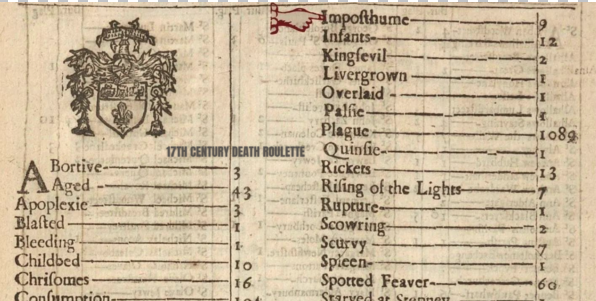17th Century Death Roulette: A Deep Dive into History’s Dark and Mysterious Game
Introduction
The 17th century was a time of great turmoil, discovery, and change. As empires expanded and new worlds were explored, so too did the human imagination stretch into areas both fascinating and macabre. Among the many tales of this period, one particularly dark and mysterious story stands out: the legend of “17th century death roulette.” This tale, entwined with human folly, desperation, and the grim realities of life in that era, offers a chilling glimpse into the lengths people would go to in moments of despair and uncertainty.
In this comprehensive article, we will explore the origins, the myths, and the potential realities behind 17th century death roulette. We will delve into the historical context, examine the cultural factors that may have given rise to such a game, and analyze its significance in the broader tapestry of human history. Whether you are a history enthusiast, a curious reader, or someone intrigued by the darker aspects of the past, this article will provide you with a thorough understanding of 17th century death roulette.
The Origins of 17th Century Death Roulette
A Game Shrouded in Mystery
The origins of 17th century death roulette are, much like the game itself, shrouded in mystery. There are no definitive records that clearly outline when or where the game first emerged, but the legend suggests that it may have originated in Europe, possibly in France or Russia. The lack of concrete evidence has led to speculation and debate among historians, with some arguing that the game was purely fictional, while others believe it may have been an extreme form of gambling or a desperate act of individuals facing dire circumstances.
The Influence of Historical Context
To understand the possible origins of 17th century death roulette, it is essential to consider the historical context of the time. The 17th century was marked by significant social, political, and religious upheaval. The Thirty Years’ War (1618-1648) devastated much of Europe, leading to widespread famine, disease, and death. The witch hunts that spread across the continent during this period also contributed to a climate of fear and superstition. In such a world, where life was often precarious and death was a constant presence, it is not difficult to imagine how a game as morbid as death roulette could have arisen.
The Role of Desperation and Folly
One of the key factors that may have contributed to the emergence of 17th century death roulette is the human capacity for desperation and folly. Faced with insurmountable odds, crushing poverty, or the threat of imminent death, individuals may have turned to such a game as a final, desperate act. The idea of gambling with one’s life in a game of chance, while horrifying, also reflects the existential struggles of the time. It is a stark reminder of the lengths to which people will go when pushed to the brink.
The Mechanics of 17th Century Death Roulette
How the Game Was Played
While the exact rules and mechanics of 17th century death roulette are not well-documented, the basic premise is believed to be similar to the modern concept of Russian roulette. Participants would take turns spinning a wheel or using some other randomizing device, with the risk of death or severe injury being the ultimate outcome for the unlucky player.
One version of the game suggests that participants would place a single round in a chamber of a flintlock pistol, spin the chamber, and then pull the trigger. Another version involves a wheel with different outcomes marked on it, with death being one of the possible results. In both cases, the game was a high-stakes gamble, with the ultimate price being one’s life.
The Psychological Impact
The psychological impact of participating in such a game would have been immense. The sheer terror of facing death, combined with the adrenaline rush of surviving each round, would have created a potent mix of emotions. For those involved, the game may have served as a twisted form of catharsis, a way to confront their fears head-on or to escape the crushing weight of their circumstances, even if only for a moment.
The Social and Cultural Implications
The existence of a game like 17th century death roulette also speaks to the social and cultural dynamics of the time. It reflects a world where life was often cheap, and where the lines between entertainment, ritual, and survival were blurred. In a society where public executions and violent spectacles were common, death roulette may have been seen as just another form of morbid amusement or a final act of defiance against an uncaring world.
The Legend and Mythology of Death Roulette
Stories and Anecdotes
Over the centuries, the story of 17th century death roulette has been passed down through oral traditions, literature, and folklore. Various anecdotes and stories have emerged, each adding to the mystique and horror of the game. Some tales speak of noblemen and soldiers who, in a moment of madness or bravado, decided to play the game as a test of courage. Others tell of prisoners or outcasts who were forced into playing as a form of execution or punishment.
One particularly famous story involves a group of mercenaries who, after a particularly brutal campaign, decided to play death roulette to determine who would keep the spoils of war. According to the legend, the game ended with only one survivor, who went mad from the experience and spent the rest of his days haunted by the ghosts of his fallen comrades.
The Influence of Literature and Art
The legend of 17th century death roulette has also been immortalized in literature and art. Gothic novels, with their emphasis on dark themes and psychological horror, have often drawn inspiration from the game. In some stories, death roulette serves as a metaphor for the existential struggles of the characters, while in others, it is a literal game that drives the plot forward.
Artists, too, have been fascinated by the concept of death roulette. Paintings and illustrations depicting the game often evoke a sense of dread and inevitability, capturing the tension and horror of the moment. These works of art serve as a reminder of the darker aspects of human nature and the lengths to which people will go when pushed to the edge.
The Evolution of the Legend
As with many legends, the story of 17th century death roulette has evolved over time. Different cultures and regions have added their own twists and interpretations to the tale, resulting in a rich tapestry of stories that reflect the fears and anxieties of different eras. In some versions, the game is portrayed as a form of divine punishment, while in others, it is seen as a test of fate or destiny.
Despite these variations, the core elements of the legend—desperation, chance, and death—remain consistent. This speaks to the universal themes at the heart of the story and the enduring fascination with the idea of gambling with one’s life.
The Reality Behind the Myth
Historical Evidence and Skepticism
Given the lack of concrete evidence, it is important to approach the story of 17th century death roulette with a degree of skepticism. While the legend is compelling, it is possible that the game never actually existed in the form described. Instead, it may be a product of the human imagination, a cautionary tale that emerged from the collective fears and anxieties of the time.
However, some historians argue that there may be a kernel of truth behind the myth. The existence of other, similarly dangerous games and rituals from the same period suggests that death roulette could have been a real, albeit rare, occurrence. The challenge lies in separating fact from fiction and determining whether the game was a widespread phenomenon or simply an isolated incident that grew into a larger legend.
Possible Origins and Influences
If 17th century death roulette did indeed exist, it is likely that it was influenced by other forms of gambling and risk-taking that were common at the time. Games of chance, such as dice and cards, were popular across Europe, and the idea of gambling with one’s life may have been a natural extension of these practices. Additionally, the brutal realities of war, disease, and poverty may have driven individuals to seek out extreme forms of entertainment or release, leading to the creation of a game like death roulette.
Another possible influence is the concept of dueling, which was prevalent among the nobility during the 17th century. Duels were often fought over matters of honor, and while they were usually conducted with some degree of formality, they could easily escalate into deadly encounters. Death roulette may have been a way to formalize the risks inherent in dueling, turning it into a game with defined rules and outcomes.
The Role of Folklore and Oral Tradition
Oral tradition has played a significant role in the preservation and dissemination of the death roulette legend. In a time when literacy rates were low and written records were scarce, stories were passed down through generations by word of mouth. As these stories were retold, they would have been embellished, altered, and adapted to fit the cultural context of the time.
Folklore often serves as a reflection of the collective consciousness of a society, capturing its fears, values, and beliefs. The legend of 17th century death roulette may have been a way for people to process the uncertainties and dangers of their world, using storytelling as a means of coping with the harsh realities of life.
The Cultural Significance of Death Roulette
A Symbol of Desperation and Despair
At its core, 17th century death roulette can be seen as a symbol of desperation and despair. The game represents a world where life was often uncertain and precarious, and where individuals were forced to confront their own mortality on a daily basis. In this context, death roulette was not just a game—it was a reflection of the existential struggles of the time.
The willingness to gamble with one’s life speaks to the extreme levels of hopelessness and despair that many people faced. Whether driven by poverty, war, or illness, the participants in death roulette may have seen the game as a final, desperate act—a way to take control of their fate, even if only for a moment.
The Intersection of Entertainment and Morality
The concept of death roulette also raises questions about the intersection of entertainment and morality. In a world where public executions and violent spectacles were common forms of entertainment, the line between life and death was often blurred. Death roulette may have been seen as just another form of spectacle, a way to entertain or shock an audience.
However, the moral implications of the game are undeniable. The willingness to risk one’s life for the sake of a game challenges our understanding of the value of human life and the ethics of entertainment. It forces us to confront uncomfortable questions about the nature of entertainment and the lengths to which people will go for the sake of a thrill.
The Legacy of Death Roulette in Modern Culture
The legacy of 17th century death roulette can still be seen in modern culture, particularly in the way we view risk-taking and the concept of “playing with death.” The game has inspired numerous works of fiction, from novels and films to video games and television shows. These modern interpretations often explore similar themes of desperation, chance, and the human fascination with mortality.
In many ways, death roulette serves as a precursor to the concept of Russian roulette, a game that has become synonymous with reckless risk-taking. While the mechanics of the two games may differ, the underlying themes remain the same, highlighting the enduring allure of gambling with one’s life.
Modern Interpretations and References
Death Roulette in Literature and Film
The concept of death roulette has been explored in various works of literature and film, often as a metaphor for the unpredictability of life and the inevitability of death. In these stories, the game serves as a catalyst for the characters’ actions, forcing them to confront their fears, desires, and mortality.
For example, in the novel “The Seventh Victim” by Robert Sheckley, participants in a deadly game of assassination are pitted against each other in a battle of wits and survival. The novel explores the psychological and moral implications of such a game, drawing parallels to the concept of death roulette.
In film, the idea of death roulette has been depicted in various forms, from psychological thrillers to horror movies. These films often use the game as a means of exploring themes of fate, destiny, and the human capacity for self-destruction.
Death Roulette in Popular Culture
Beyond literature and film, the concept of death roulette has made its way into popular culture in other ways. The game has been referenced in music, art, and even video games, where it is often portrayed as a high-stakes, life-or-death challenge.
In video games, death roulette is sometimes used as a gameplay mechanic, where players must make risky decisions that could lead to the death of their character. These games often play on the themes of chance and mortality, forcing players to weigh the risks and rewards of their actions.
The Psychological Appeal of Death Roulette
The enduring appeal of death roulette in modern culture may be rooted in its psychological impact. The game taps into deep-seated fears and anxieties about death, fate, and the unpredictability of life. By confronting these fears in a controlled environment, whether through fiction or gameplay, individuals may find a sense of catharsis or empowerment.
The game also serves as a reminder of the fragility of life and the importance of making choices that align with one’s values and beliefs. In this way, death roulette can be seen as a metaphor for the choices we make in life and the risks we take in pursuit of our goals.
FAQs
What is 17th century death roulette?
17th century death roulette is a legendary game believed to have originated in Europe during the 17th century. The game involved participants gambling with their lives, with death or severe injury being the ultimate outcome for the unlucky player. The exact origins and rules of the game are shrouded in mystery, and it is unclear whether the game actually existed or is purely a product of folklore.
Did 17th century death roulette actually exist?
The existence of 17th century death roulette is a subject of debate among historians. While there is no concrete evidence to prove that the game existed, the legend has been passed down through oral traditions, literature, and folklore. Some historians believe that the game may have been a real, albeit rare, occurrence, while others argue that it is purely fictional.
How was 17th century death roulette played?
The mechanics of 17th century death roulette are not well-documented, but the basic premise is believed to be similar to the modern concept of Russian roulette. Participants would take turns spinning a wheel or using some other randomizing device, with the risk of death or severe injury being the outcome for the unlucky player.
What is the significance of 17th century death roulette in history?
17th century death roulette is significant as a symbol of the desperation, despair, and existential struggles of the time. The game reflects a world where life was often uncertain and precarious, and where individuals were forced to confront their own mortality on a daily basis. It also raises questions about the intersection of entertainment and morality, challenging our understanding of the value of human life.
How has 17th century death roulette influenced modern culture?
The concept of 17th century death roulette has influenced modern culture in various ways, including literature, film, music, and video games. The game is often used as a metaphor for the unpredictability of life and the inevitability of death, and it continues to fascinate and inspire creative works to this day.
Conclusion
The legend of 17th century death roulette offers a chilling glimpse into the darker aspects of human history. Whether it existed as a real game or is purely a product of folklore, the story of death roulette serves as a powerful reminder of the desperation, despair, and existential struggles faced by individuals in the 17th century. It also raises important questions about the nature of risk, fate, and the value of human life—questions that continue to resonate in modern culture.
As we explore the origins, mechanics, and cultural significance of 17th century death roulette, we are reminded of the enduring allure of gambling with one’s life and the psychological impact of confronting our deepest fears. Whether through fiction, art, or gameplay, the concept of death roulette continues to captivate our imagination, serving as a metaphor for the choices we make and the risks we take in the face of an uncertain world.






